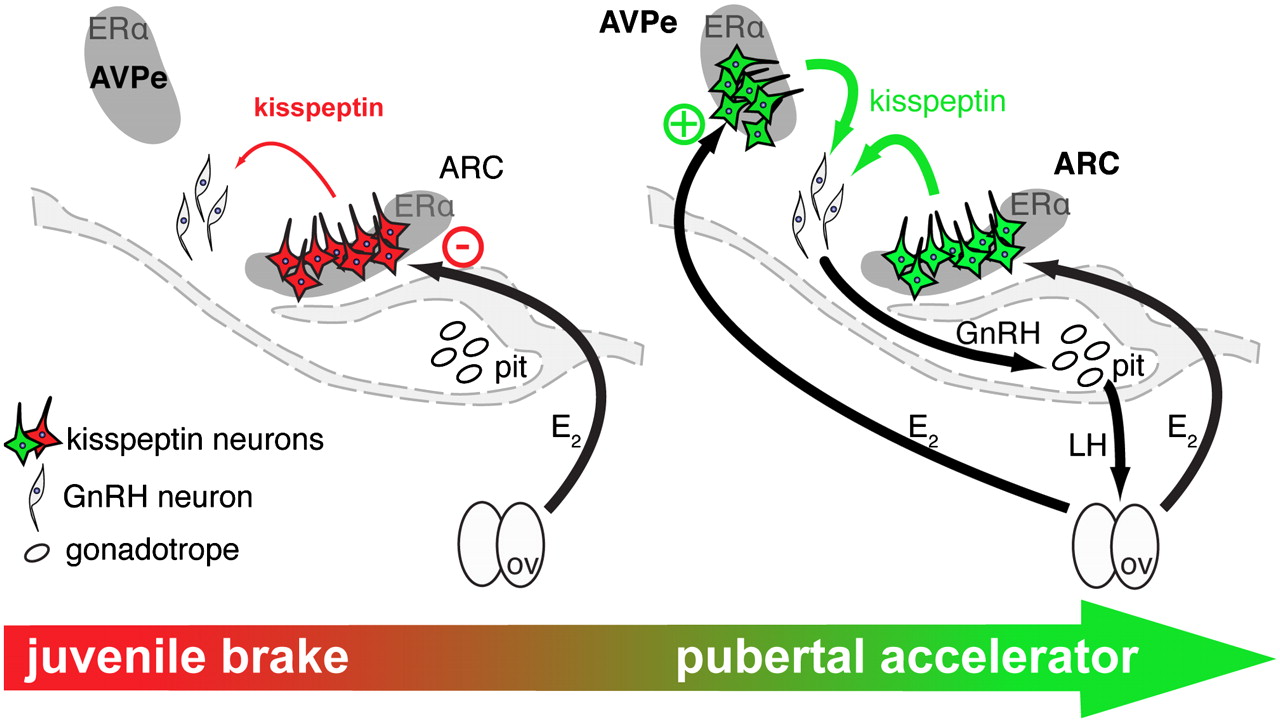Biology of Reproduction, lecture on Menopause
XIX. Menopause
A. permanent 2o amenorrhea
1. begins with oligomenorrhea
a. and lengthened cycles
B. Average Age = 49.8
1. range = 35-55
C. Symptoms of Transition (physical symptoms more permanent)
1. hot flashes = skin vasodilation
a. → ↑ 1oC
i. occur in 1/4 women
b. caused by → ↑ orexin (Orx)
i. due to lack of E negative feedback
2. weight gain
3. voice deepening
from increased adrenal androgens
4. minor hirsutism
5. vaginal dryness
6. Osteoporosis (very common)
a. weakening of bones
i. calcium loss
b. 1 in 4 women over 60
i. 12th leading cause of death in the US
7. fatigue
8. irritability
symptoms with emotional component temporary
9. depression
10. insomnia
11. Treatment = Estrogens (ERT)
a. usually estrone sulfate
b. prevents osteoporosis by aiding calcium uptake
i. increased risk of osteoporosis comes from:
(1) lack of exercise
(2) low Ca++ intake
(3) smoking
(4) alcohol
(5) caffeine
(6) no pregnancy
(7) fair complexion
(8) thin and small bones
(9) early menopause
(10) genetic predisposition
- family history of osteoporosis
c. helps prevent cardiovascular disease
d. reverses vaginal dryness
e. reverses depression
f. increased endometrial cancer risk
i. 1-5 years → ↑ 5.6X
ii. 7 or more years → ↑ 139X
iii. addition of P to E replacement abrogates
the cancer risk
D. Cause of Menopause
1. Depletion of Ovarian Follicles
a. no 3o follicles
i. reduced receptors for LH and FSH
b. no estrogens produced
i. follicular inhibin decreases
ii. androgens increase
(1) during ovarian decline
c. negative feedback reduced
i. 10X increase in FSH and LH in the blood
2. Timing of Menopause
a. early menopause increases with:
i. poor nutrition
ii. smoking
iii. identical twins
iv. no pregnancy
v. 2o amenorrhea for other reasons
b. delayed menopause
i. pregnancy
(1) more follicles may be lost to atresia
in non-cycling ovaries than cycling
(2) ovaries are supported by hCG during pregnancy
(3) P may be related to lengthened ovarian life
ii. developed countries have increasing average age
of menopause
iii. earlier menarche may result in later menopause
